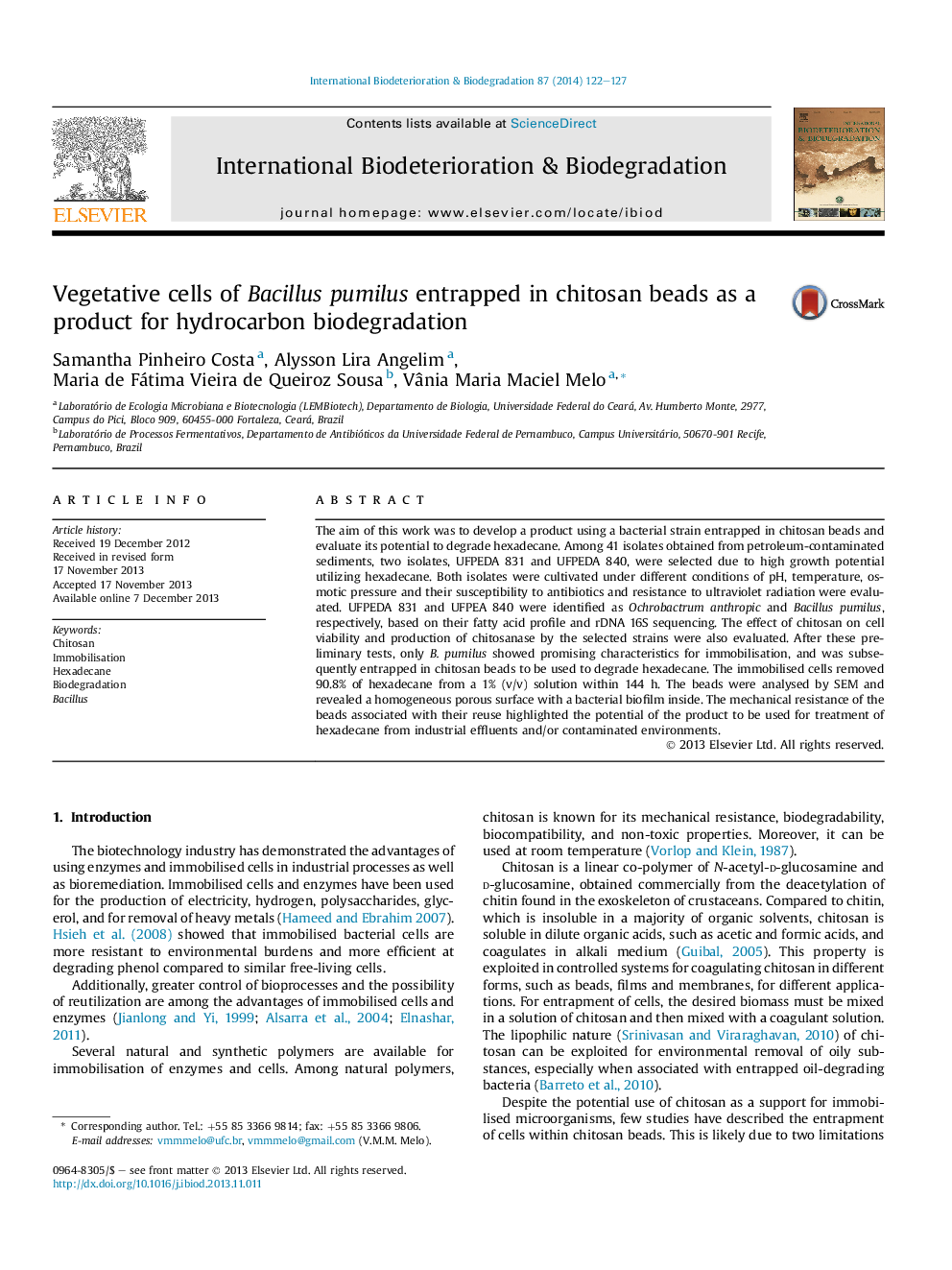| Article ID | Journal | Published Year | Pages | File Type |
|---|---|---|---|---|
| 4365006 | International Biodeterioration & Biodegradation | 2014 | 6 Pages |
Abstract
The aim of this work was to develop a product using a bacterial strain entrapped in chitosan beads and evaluate its potential to degrade hexadecane. Among 41 isolates obtained from petroleum-contaminated sediments, two isolates, UFPEDA 831 and UFPEDA 840, were selected due to high growth potential utilizing hexadecane. Both isolates were cultivated under different conditions of pH, temperature, osmotic pressure and their susceptibility to antibiotics and resistance to ultraviolet radiation were evaluated. UFPEDA 831 and UFPEA 840 were identified as Ochrobactrum anthropic and Bacillus pumilus, respectively, based on their fatty acid profile and rDNA 16S sequencing. The effect of chitosan on cell viability and production of chitosanase by the selected strains were also evaluated. After these preliminary tests, only B. pumilus showed promising characteristics for immobilisation, and was subsequently entrapped in chitosan beads to be used to degrade hexadecane. The immobilised cells removed 90.8% of hexadecane from a 1% (v/v) solution within 144 h. The beads were analysed by SEM and revealed a homogeneous porous surface with a bacterial biofilm inside. The mechanical resistance of the beads associated with their reuse highlighted the potential of the product to be used for treatment of hexadecane from industrial effluents and/or contaminated environments.
Related Topics
Life Sciences
Environmental Science
Environmental Science (General)
Authors
Samantha Pinheiro Costa, Alysson Lira Angelim, Maria de Fátima Vieira de Queiroz Sousa, Vânia Maria Maciel Melo,
